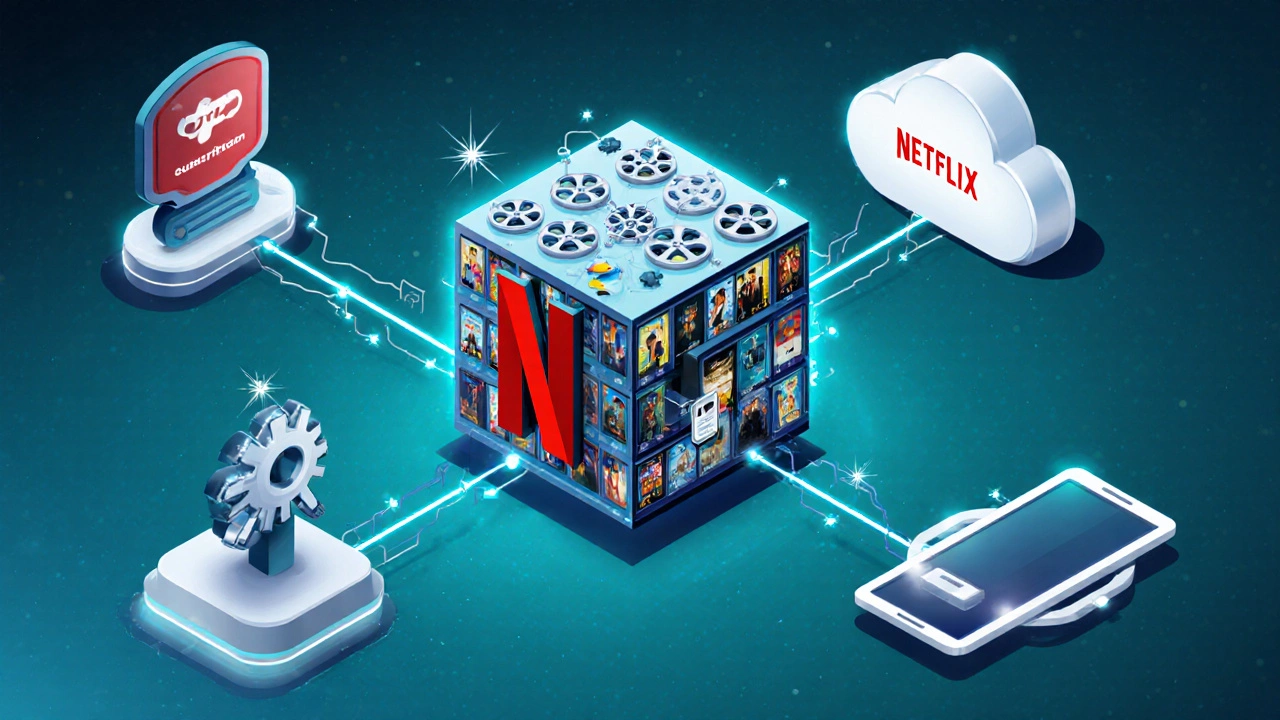Top eLearning Platforms in 2025: A Comprehensive Guide

The digital era has revolutionized how we learn, and eLearning platforms have become a crucial part of this transformation. As we embrace the possibilities offered by online education, it's important to understand what distinguishes one platform from another in 2025.
Whether you're a student, a professional looking to upskill, or simply a curious mind, the right eLearning platform can make a significant difference in your educational journey. Join us as we explore the evolving landscape of eLearning platforms, discover the key features they offer, and learn how to choose the best option tailored to your needs.
- The Evolution of eLearning Platforms
- Key Features to Look For
- Popular Platforms of 2025
- Tips for Choosing the Right Platform
The Evolution of eLearning Platforms
The journey of eLearning platforms takes us back to a time when technology began to seep into educational spaces, gradually transforming how knowledge was disseminated. Initially, eLearning was a supplementary tool — an alluring add-on for traditional classrooms. Over time, with the progress in technology, these platforms transcended their auxiliary role, becoming indispensable pillars in the realm of online education. The evolution resembles a tapestry where different threads of technological advances, pedagogical insights, and learner needs have woven together to create a vibrant digital learning ecosystem.
During the early years of digital learning, platforms were mainly text-based, focusing on delivering content that's easily digestible online. However, as broadband internet became widespread, eLearning platforms seized the opportunity to enrich learning experiences with multimedia elements. Adding video lectures, interactive quizzes, and even live webinars, these platforms began offering a dynamic alternative to traditional classroom settings. This transformation wasn't just about adopting new tools, but about redefining how education could be delivered and received. The interactivity and engagement that came along increased the effectiveness and appeal of online education significantly.
The integration of AI and machine learning in recent years has further accelerated the development of eLearning platforms. By offering personalized learning paths, adaptive learning technologies are reshaping how learners engage with content. Platforms now analyze user data to customize courses, suggest content, and even predict learning outcomes. This level of personalization bridges the gap between the static lessons of old and a modern, tailored learning experience. Quoting a notable figure in the educational technology realm, "Learning in the digital age isn't just about accessing information but about crafting a personalized journey," captures the essence of the improvements brought by technological advancements.
As we venture deeper into 2025, the role of digital learning has been cemented further by the increase in remote work and the globalization of education. The pandemic years became a pivotal moment, acting as a catalyst for the acceptance and implementation of these platforms across various sectors. Institutions and organizations realized the potential of eLearning platforms to bridge gaps not just in terms of distance but also in economic disparities. The democratization of education — making quality learning accessible to everyone, everywhere — stands as a testament to this evolution.
While discussing the changing landscape, it's insightful to look at some data reflecting these shifts. A recent study shows that approximately 60% of institutions have integrated or plan to integrate eLearning platforms as an essential component of their teaching methodologies by the end of the decade, highlighting a massive shift from skepticism to acceptance. This transition not only signifies growing trust but acknowledges the efficacy of these platforms in delivering educational content effectively. Emphasizing such trends paints a clearer picture of eLearning's evolution, illustrating how it's not just keeping pace with changes, but actively influencing the future of education.

Key Features to Look For
In the dynamic world of eLearning, choosing the right platform can sometimes feel like trying to find a needle in a haystack. As you navigate this digital realm in 2025, it's essential to focus on specific features that can enhance your educational experience. At the heart of any effective eLearning platform is an intuitive user interface. This allows learners to smoothly transition through different modules and access resources without facing a technical labyrinth. Many users prioritize platforms that support multi-device compatibility, giving the freedom to switch from a laptop at home to a mobile device on the go. Such flexibility ensures that learning continues seamlessly, whether you're sipping coffee at a cafe or waiting for a flight at an airport.
Another indispensable feature is the integration of multimedia elements. The days when education was limited to text-heavy pages are long gone. Today's learners thrive on interactive videos, podcasts, and animations that bring subjects to life. This rich content not only keeps users engaged but also caters to different learning styles, whether you are a visual, auditory, or kinesthetic learner. Additionally, advanced analytics have become a cornerstone of the top eLearning platforms. These tools provide insights into your learning progress, highlighting areas of strength and those needing improvement. For instructors and organizations, such analytics can help tailor educational offerings to better meet learner needs.
Interactivity is key when it comes to sustaining motivation and engagement in digital learning. Features like discussion forums, chat functions, and collaborative projects help create a sense of community among learners. A platform that facilitates peer interaction replicates the traditional classroom experience, providing opportunities to learn not just from instructors but also from fellow students. Security is another crucial aspect that cannot be overlooked. With increased cyber threats, it's vital that online education platforms offer robust data protection measures to ensure that both personal information and learning progress remain secure.
Moreover, adaptive learning technology is gaining traction in 2025, offering personalized learning paths tailored to an individual's pace and understanding. This technology adapts the content based on user feedback and previous performance, making the learning process more efficient and tailored to personal needs. Speaking of personalization, platforms that allow customization of learning paths or modules according to personal or professional goals tend to score higher on learner satisfaction. This level of personalization not only enhances engagement but also supports long-term retention of knowledge.
"The secret of your future is hidden in your daily routine," said author Mike Murdock, emphasizing the importance of consistent and tailored learning practices in achieving future goals.

Popular Platforms of 2025
The landscape of eLearning continues to evolve, with 2025 marking a year of significant innovation and adaptation in the field. At the forefront of these transformations are platforms that not only deliver knowledge effectively but also create engaging, interactive learning environments. Among the key players, Coursera stands out. Having launched several new features tailored for a personalized learning journey, the platform offers a wide range of courses from top universities globally. Learners appreciate its blend of flexibility and structure, allowing them to learn at their own pace while ensuring a comprehensive understanding of the subject matter.
Another platform making waves is Udemy. Known for its diverse course offerings, Udemy caters to a broad range of interests and professional needs. Its unique feature of democratized teaching, where experts from various fields can create and share their courses, enriches the content variety. This open approach has resulted in an immense library of courses across virtually every domain imaginable, making it a go-to for many international learners seeking specific skills or knowledge.
Canvas, primarily known as a learning management system in academic institutions, continues to strengthen its position in the digital learning sector. The platform's user-friendly interface and extensive customization options allow educators to tailor courses to fit specific learning objectives and styles. Instructors can integrate multimedia into their lessons, enhancing student engagement. A quote from a renowned educational technologist highlights its impact:
"Canvas has revolutionized how we engage with our students, providing seamless integration of various tools that enhance the learning experience."
Emerging Trends
And let's not overlook LinkedIn Learning, which attracts those in the corporate world aiming to upskill or reskill for career advancements. It links real-world career paths with skill development, offering tailored learning paths that align with job market demands. Its collaboration with industry leaders ensures that the content is relevant and up-to-date, a crucial factor for professionals aiming to stay ahead in their careers. A distinctive feature is its ability to blend learning with your professional network, adding context to the skills you acquire and enhancing credibility.
Despite their differences, each platform has benefited from advancements in technology. Integration of AI and machine learning for personalized learning experiences, real-time feedback, and virtual simulations for practical learning environments have all been pivotal. A notable trend is the rise of virtual and augmented reality, offering immersive experiences that transform abstract concepts into tangible learning moments. Such technologies redefine interaction in the virtual classroom, making learning more intuitive and engaging. In a recent study conducted by a leading research firm, students who used VR-enhanced modules displayed a 15% increase in knowledge retention compared to traditional methods. This indicates a promising future for platforms that are quick to adopt and integrate cutting-edge technologies.
In summary, whether seeking knowledge for personal enrichment or professional development, the online education space is filled with innovative platforms that cater to varying needs and preferences. As technology continues to advance, these platforms remain committed to delivering quality education that is accessible and relevant to today's fast-changing world.

Tips for Choosing the Right Platform
Embarking on the journey of online education involves more than just signing up for the first platform you encounter. With a multitude of options out there, selecting the right eLearning platform is pivotal to ensuring you get the most out of your learning experience. The first thing to consider is your learning goals and expectations. Ask yourself what you intend to achieve through this course and how the platform can facilitate these goals. Do you need a platform that offers certifications, or are you looking for informal courses for personal enrichment? Understanding your objectives will help narrow down suitable platforms that align with these aspirations.
Another crucial factor is the platform’s user interface and technical support. A complex, non-intuitive interface can stifle your learning experience significantly. Look for a platform that offers a clean, user-friendly layout. Technical issues are inevitable, and having excellent customer support can be a game-changer. Many reliable platforms offer 24/7 support to assist you in resolving technical glitches. Check for tutorials or demo videos that the platform might provide to help you navigate through its features comfortably. User reviews can be a great source of insights regarding these aspects.
"Ease of use in learning platforms doesn't just enhance student comfort but is critical to achieving learning outcomes," says Professor Daniel Stephens, a notable figure in educational technology.
Another important element is the breadth and depth of online education content. Consider what range of subjects and courses the platform offers and whether they span from beginner to advanced levels. Having a wide variety ensures that you can deepen your knowledge over time within the same environment. Accreditation is another point to ponder; courses that provide certifications from recognized institutions carry more weight in professional settings. Verifying the credibility of the instructors and course creators can also shed light on the quality of content.
Accessibility and Flexibility
Being able to access your courses anytime, anywhere offers a massive advantage, especially for those balancing work and studies. Mobile accessibility is increasingly important as more learners prefer to use tablets or smartphones. Evaluate if the platform provides an app and if it supports offline downloads, so you can learn without disruption. Check if the platform gives flexibility in terms of pacing. Self-paced courses are beneficial for those who have irregular schedules and cannot commit to a fixed routine. Understanding the degree of interaction provided by the platform, through forums or live sessions, is also essential to ensure you have opportunities to engage with fellow learners.
Lastly, but crucially, consider the platform’s cost and value offering. Compare the subscription models or pricing plans available. Some platforms offer free courses with an option to pay for certification, and this can be appealing for learners on a budget. Look out for any hidden fees too, such as material costs or addition of certifications. Decide on a comfortable budget range and weigh it against the quality of content and features provided. Remember, the most expensive option isn't always the best, nor is the cheapest always the worst. With the right platform, digital learning can open new doors to personal and professional growth.

